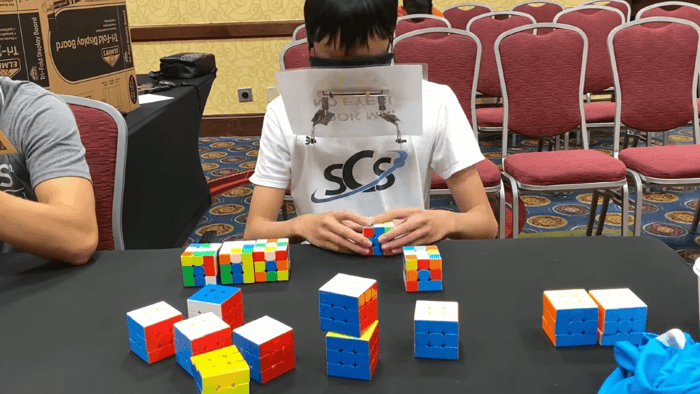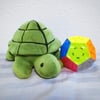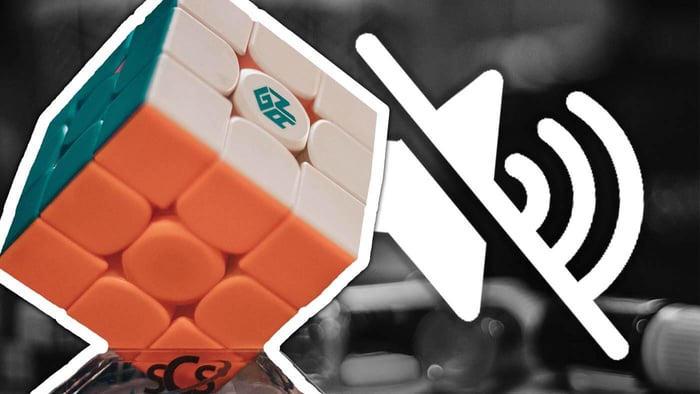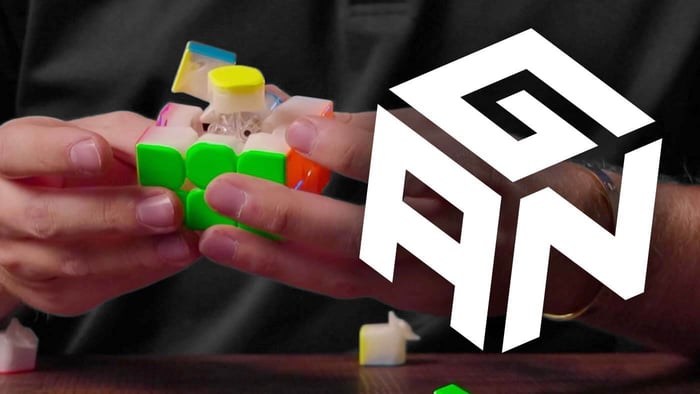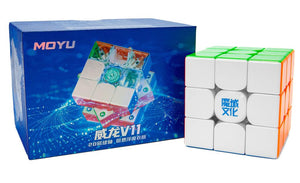Multiblind is one of the hardest and most impressive World Cube Association (WCA) events. In official competitions, the competitor first chooses how many cubes they want to attempt, then is given 10 minutes per cube, with up to an hour, to memorize and solve them.
After the attempt is finished, score is calculated by subtracting the number of unsolved cubes by the number of solved cubes, and in the case of a tie, the faster time is better. For example, a 7/10 in 50:33 attempt would be 4 points because 7 solved cubes - 3 unsolved cubes = 4 points. However, this would be ranked worse than a 4/4 in 30:10, as the 4/4 attempt is faster.
Before attempting multiblind, you should know how to solve a 3x3 blindfolded.
3BLD vs MBLD
At first glance, multiblind looks the same as 3BLD, but with more cubes. However, there’s a few changes that make MBLD slightly different.
Memo-execution order: In 3BLD, most people memorize corners, memorize edges, execute edges, and execute corners in that order. This is done so edges can be stored in short-term memory, as you execute them right after you finish memorizing them. However, in MBLD, both edges and corners need to be stored in long-term memory. Therefore, it makes more sense to memorize and execute in the same order. Most people choose to memorize edges, memorize corners, execute edges, then execute corners.
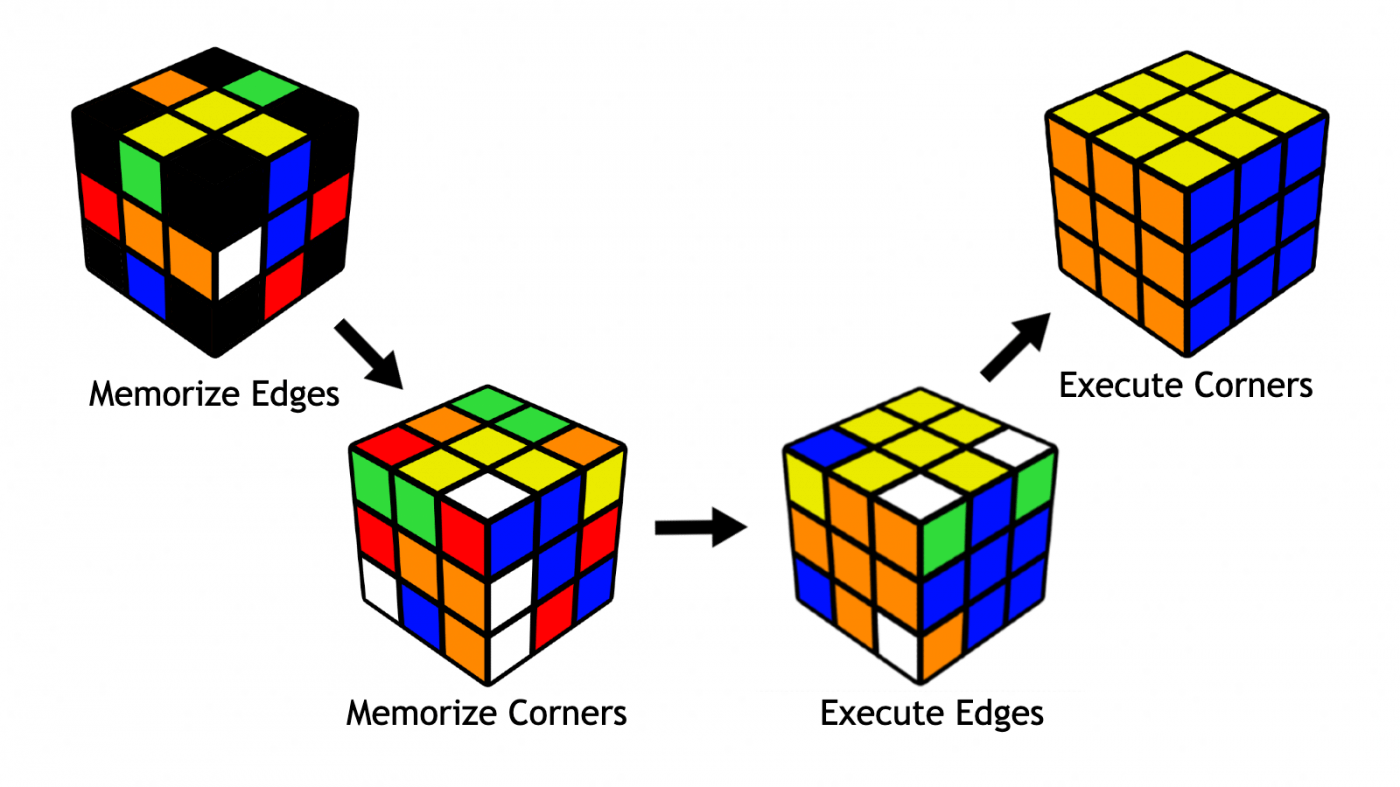
Memorization technique: An average 3BLD solve will require you to memorize about 20 letters. This can be done using images, audio, or visuals. However, in MBLD, you have to memorize a lot more. To accomplish this, a technique known as Roman Rooms (Method of Loci) is used to memorize large amounts of information effectively.
Roman Rooms
The roman rooms technique involves placing objects along a set route through rooms that you’re familiar with. The rooms can be anything, from a bedroom to a playground, to a road intersection. You can even use a location in a video game as a room! The most important thing when choosing rooms is that you’re very familiar with them and can easily picture them in your head.
Source: 4BLD (Timothy Goh)
You can split a room into several loci to store more information. Loci are just particular points, or locations, in that room. For example, if you were to use a bedroom as a room, then you might have a locus on the bed, on the desk, and on the floor near the door. It’s important to have easily distinguishable loci - if they’re too similar, the information stored in them might get mixed up.
To apply roman rooms to multiblind, the letter pairs that you memorize from the cube can be translated into objects placed in your rooms. Typically, the corner memo of a cube is placed in one locus, and the edge memo is either placed in one locus or split across two. This is best explained using an example:
Edge memo: QU BN SA JR FW VA
Letter pairs: QUartz BeaN SAnta JaR FloWer VAse
For this example, we’re going to use the bedroom example from earlier and split the edge memo across two loci. The first locus is the bed. Try to visualize a piece of quartz, a bean, and Santa on top of the bed. It’s important to keep these in order, so mentally place them in a line from left to right. The second locus is on the desk. Visualize a jar, flower, and vase on the desk. To make it more memorable, it helps to have some interaction between the objects. You can visualize a jar with a flower in it, then the flower moving to a vase.
Corner memo: BT MD OL SR
Letter pairs: BaT MaD OLd StaR
The third locus is on the floor near the door. Picture a bat getting mad at an old star in that location. It should feel like a scene - your memorization is the action, and the room is the setting.
Congratulations! You just used roman rooms to memorize a cube. You can repeat this process using different rooms and loci to memorize as many cubes as you need.
Review
Reviewing your memorization is important to actually retaining it. When attempting a small number of cubes, you can review everything each time you memorize another cube. For example, you go through cube 1, then cubes 1-2, then cubes 1-3, then cubes 1-4, and so on. However, this is time-consuming, and at a higher level it’s better to use a structured review system.
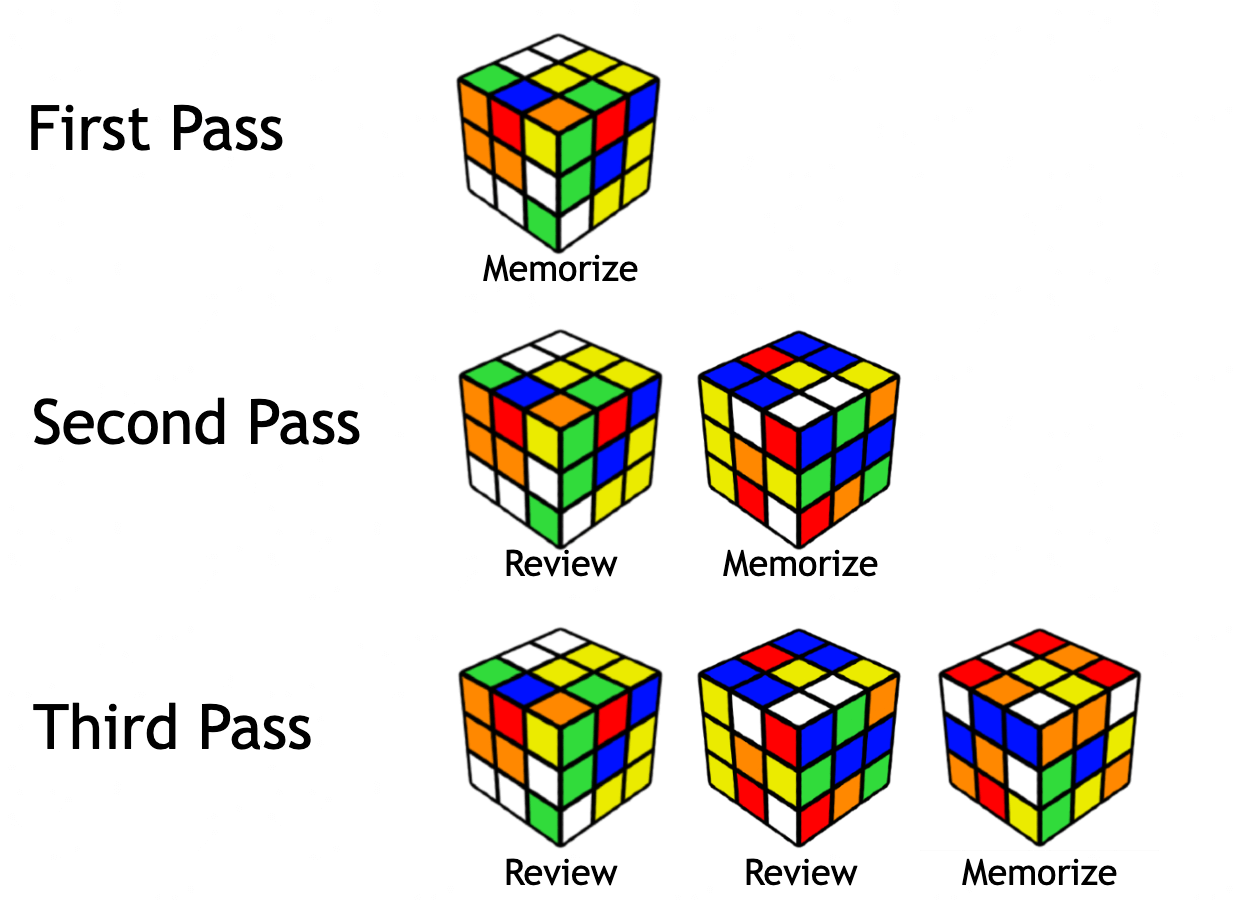
Conclusion
A linear memo-exec order, roman rooms, and a review system are crucial to successfully doing multiblind. Being comfortable with these techniques will make multiblind much more manageable and will help you get your first success.
Popular MBLD Cubes - relatively cheap but solid performance, perfect for multiblind due to the high amount of cubes required:
YuXin Little Magic 3x3

$ 5.06
$ 5.95
The YuXin Little Magic 3x3 is one of the most iconic and affordable budget speed cubes in the cubing world. Originally released in 2017, it remains a popular choice for those just getting started with speedcubing, thanks to its smooth… >> SHOP PRODUCT <<
Keep in mind that all cubes in multiblind should not have a logo for official WCA competition. The cubes listed above have removable logo stickers rather than logos printed directly on the cube.



